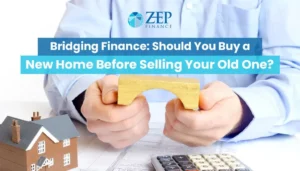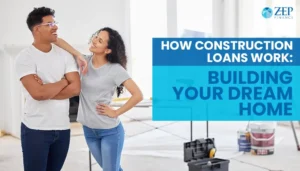What is this buzz phrase “circular economy” and what is its relevance in real estate investments? At a general level, a circular economy (CE) has a circular flow of materials and energy. Traditionally, the economy has followed a linear “take-make-waste” path. Resources are excavated from the ground, processed, manufactured with, sold and disposed as waste into landfill at the end of the lifecycle.
Always starting with virgin materials in production and then throwing away used products is not a sustainable economy. Humans are a part of nature; therefore, human economics is considered a sub-system of the economics of nature. Generation X started the ethical drive against this, and millennials are now leading the movement.
A definition of the circular economy given by Ellen MacArthur Foundation states that “a circular economy is an industrial system that is restorative or regenerative by intention and design. It replaces the ‘end-of-life’ concept with restoration, shifts towards the use of renewable energy, eliminates the use of toxic chemicals, which impair reuse, and aims for the elimination of waste through the superior design of materials, products, systems, and, within this, business models.”
The principle of a circular economy is a nature-imitating concept of “cradle-to-cradle” instead of the traditional “cradle-to-grave”.
Traditional Vs. The New Economy
The real estate industry is a significant part of different countries’ economies. Generally speaking, the real estate industry refers to real estate investment companies, facilities services, building management, brokerage and real estate agents, property development, real estate finance, appraisal and advisory services and, most importantly, the clients.
As an example, the built environment in Finland constitutes approximately 70% of the national wealth. And, in line with global averages, also contributes 30% of waste and carbon footprint.
Investing in property is traditionally done via direct investments by purchasing the building together with the ground it was built on, or buying shares/sectional title from an apartment block including land usage or an empty plot and structure or into a development scheme as an investor.
The benefit of the circular economy in real estate investment has at least three benefit points: lower costs from the investment increased property value, and the creation of a green image.
Improved financial performance of up to 18% over 12 years is reported as available to investors and construction clients who unlock the potential of underutilised space in their portfolios. This is one of five positive business cases for circular real estate business models developed by a research project, FROM PRINCIPLES TO PRACTICES: REALISING THE VALUE OF CIRCULAR ECONOMY IN REAL ESTATE, published by ARUP and the Ellen MacArthur Foundation, an internationally tested study.
New Customer Demographics
A new generation of customers is highly aware of the environmental and social costs of business-as-usual. The new economy offers real estate investors a framework for reaching ecological and social goals whilst simultaneously delivering improved profits. Consideration of circular economy principles has primarily been on design and architecture, but that is not the full story. The Arup Ellen MacArthur Foundation report explores the whole story and tests it.
For example, much space in buildings is underutilised. This is an investment loss. Reportedly, the average commercial space is 40-60% unoccupied during office hours, while, for example, 72% under-utilisation of higher education space is reported in the UK.
The report suggests five models that can be considered and have been tested.
Flexible Spaces uses the trend of co-working spaces as a foundation to unlock the potential of underutilised space in buildings while balancing the risks generally associated with short tenure space. This was a test in an office space in Milan. The outcome benefit was reported as an additional revenue equivalent to 18% of the net present lease cost over 12 years. Flexible Spaces was the first business model proposed.
Retail Estate Business Models
Adaptable Assets, the 2nd business model proposed, looks at the value of creating buildings which can change with changing market conditions and social expectations. This requires them to be adaptable to alternative uses.
The third business model is developed based on Movable/Relocatable Buildings across several sites. This was explored in Amsterdam and was found to create an internal rate of return up to 26%. That was over 11 years without accounting for land costs.
The largest portion of the built environment is material usage. Material depreciation in the built environment accounts for the approximate annual value of A$3.43tn.
The Residual Value model proposes tradable futures contracts related to the building materials value at deconstruction. Clients can sell these futures contracts before the construction phase. These can be traded while the building is operational, changing in value to local real estate markets and global commodity markets. Upon deconstruction transfer of ownership and cash settlement takes place, then the materials re-enter the market for reuse. A retail fit-out in Berlin was used as a test subject. 5% across ten years was calculated as the reduction achieved by this model over the whole life cost of ownership.
Additional Motivations
Building energy could be profitably conserved to the extent of 20-40%, many buildings are not performing as designed. A proposal is to introduce pay for performance business models. Scaling this approach up to whole building systems creates the concept of Performance Procurement. This was tested in a build-to-rent development in London, and it delivered up to a 3% improvement in internal rate of return over 30 years.
A final overview of the circular economy relates to direct consumer behaviour. If you are considering buying to flip a property, it is proposed that you consider buying to rent out.
The generation of millennials (24 years to 39 years old in the year 2020) is choosing rental over a purchase. This is not necessarily because they cannot afford to purchase a house; they want to avoid hidden costs and losses. They have watched economic slumps wipe out property portfolios, they have watched parents work their entire lives for a company and then get retrenched, and they have watched a pandemic bring the world to a standstill.
All this has resulted in risk-averse and commitment-averse behaviour. They wish to work from anywhere, including from home and other countries, moving regularly throughout their lives, from Byron Bay to Bali.
Not only do millennials want to rent homes, but they want to rent furniture, clothing and accessories. Many large retailers are on board with this and have furniture rental options as well as aisles dedicated to the sales of second-hand items.
Contact your go-to mortgage broker in Byron Bay, ZEP Finance, for many other tips relating to the property decisions for your needs.
If you want to make sure you have considered all the options and want to see if there is a customisable finance option for your property investment, contact us today.







